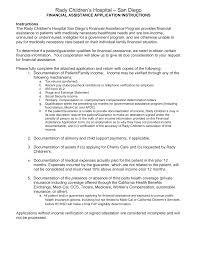
When someone is dying, they often don't know. This is why it's important to understand what to look out for in the last months, weeks and days of life. There are two types of changes: emotional and spiritual changes as well as physical ones.
Changes in breathing are one of the most common signs that a person is near death. The breathing can change from shallow to deep or slow to deep and back again. Fluid in the lungs and a persistent cough can also be symptoms.
It is important to be aware of breathing patterns, which can be confusing and distressing for family members. Breathing patterns are a sign of someone not being fully aware. This can happen for many different reasons, such as narcotic medication, heart failure or brain damage.
The signs of dying include pain and nausea. These symptoms can occur at any time during a person's journey to death, but they become more intense as the end gets closer. Ask their doctor if pain medication can help a loved one who is having difficulty breathing or swallowing.

Another symptom of death is a decreased appetite or a lack of interest in the things that once brought you pleasure. They may start to feel very detached and withdrawn, even becoming confused or incoherent at times.
Even skin color can change. The skin color may change as well.
They may also feel more cold when their circulation slows. Someone close to them may be able to give them a blanket if they feel cold or have dry skin.
They may also become glassy or milky, like a newborn baby's. These eyes can also look very milky or glassy.
The blinking of their eyes can be uncomfortable for family members. As the fluid within a person's brain may affect their eyesight, it is important to offer eye drops.

In the final hours of life, some people have a sudden burst energy. They can stand up and talk briefly. This can be very comforting, but you should also keep in mind it may be a sign that the patient is terminally ill.
Another common death sign is sudden, involuntary muscle movements known as myoclonics. These can be distressing to watch, but they are a normal part of the process of dying.
These movements can happen in the arms or legs and can be accompanied by other changes, such as an increased heart rate or weaker muscles. They are usually not painful, but they can be distressing for those watching.
If you see these signs in your loved one, you should let them know that support is available. They may not be able to talk or respond, but they can still hear and know that you are there. Avoid arguments and misunderstandings by speaking calmly, especially when the person in question is comatose.
FAQ
What does "public" really mean in public healthcare?
Public Health refers to the preservation and enhancement of the health status of the community. It includes preventing disease, injury and disability, encouraging good health practices, providing adequate nutrition, and controlling communicable diseases and environmental hazards.
What are the various types of insurance for health?
There are three main types:
-
Private health insurance covers most costs associated with your medical care. This type insurance is often purchased directly by private companies. Therefore, you will pay monthly premiums.
-
While public insurance covers the majority cost of medical care there are restrictions and limitations. Public insurance, for example, will not cover routine visits to doctors or hospitals, labs and X-ray facilities.
-
Medical savings accounts (MSA) are used to save money for future medical expenses. The funds are kept in a separate account. Many employers offer MSA programmes. These accounts are tax-free, and they accumulate interest at rates similar to bank savings accounts.
What are your thoughts on the most pressing public health issues?
Many people have problems with obesity, diabetes, heart disease and cancer. These conditions account for more deaths annually than AIDS and car crashes combined. In addition, poor diet, lack of exercise, and smoking contribute to high blood pressure, stroke, asthma, arthritis, and other problems.
What is the difference of a doctor and physician?
A doctor refers to a person who is licensed to practise medicine and has completed his/her training. A physician is a doctor who specializes in a particular area of medicine.
Statistics
- Consuming over 10 percent of [3] (en.wikipedia.org)
- For the most part, that's true—over 80 percent of patients are over the age of 65. (rasmussen.edu)
- Price Increases, Aging Push Sector To 20 Percent Of Economy". (en.wikipedia.org)
- The healthcare sector is one of the largest and most complex in the U.S. economy, accounting for 18% of gross domestic product (GDP) in 2020.1 (investopedia.com)
- Healthcare Occupations PRINTER-FRIENDLY Employment in healthcare occupations is projected to grow 16 percent from 2020 to 2030, much faster than the average for all occupations, adding about 2.6 million new jobs. (bls.gov)
External Links
How To
What are the 4 Health Systems
Healthcare is a complex network that includes hospitals, clinics and pharmaceutical companies as well as insurance providers, government agencies, public officials and other organizations.
This infographic was created to help people understand the US healthcare system.
Here are some key points:
-
Annual healthcare spending totals $2 trillion and represents 17% GDP. That's more than twice the total defense budget!
-
In 2015, medical inflation reached 6.6%, which is higher than any other consumer category.
-
Americans spend an average of 9% on their health costs.
-
There were more than 300 million Americans without insurance as of 2014.
-
Although the Affordable Health Care Act (ACA), has been approved by Congress, it hasn't yet been fully implemented. There are still many gaps in coverage.
-
A majority believe that the ACA must be improved.
-
The US spends more money on healthcare than any other country in the world.
-
Affordable healthcare for all Americans would reduce the cost of healthcare by $2.8 trillion per year.
-
Medicare, Medicaid, as well as private insurers, cover 56% all healthcare expenditures.
-
These are the top three reasons people don’t get insured: Not being able afford it ($25B), not having enough spare time to find insurance ($16.4B), and not knowing anything ($14.7B).
-
There are two types: HMO (health maintenance organisation) and PPO [preferred provider organization].
-
Private insurance covers almost all services, including prescriptions and physical therapy.
-
The public programs cover outpatient surgery as well as hospitalizations, nursing homes, long term care, hospice, and preventive health care.
-
Medicare is a federal program that provides senior citizens with health coverage. It covers hospital stays, skilled nursing facility stays and home visits.
-
Medicaid is a joint state-federal program that provides financial assistance to low-income individuals and families who make too much to qualify for other benefits.